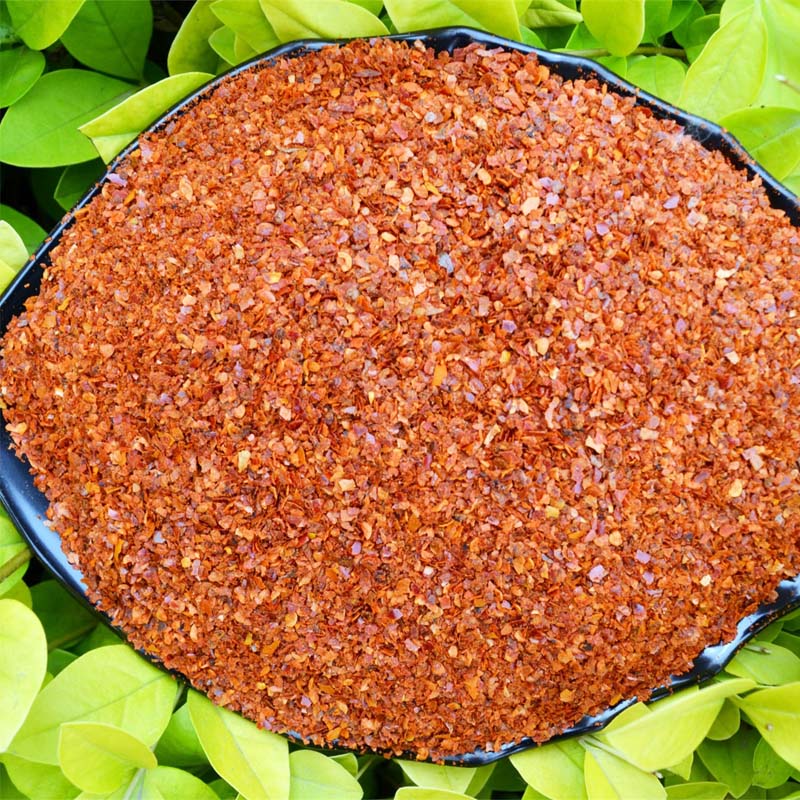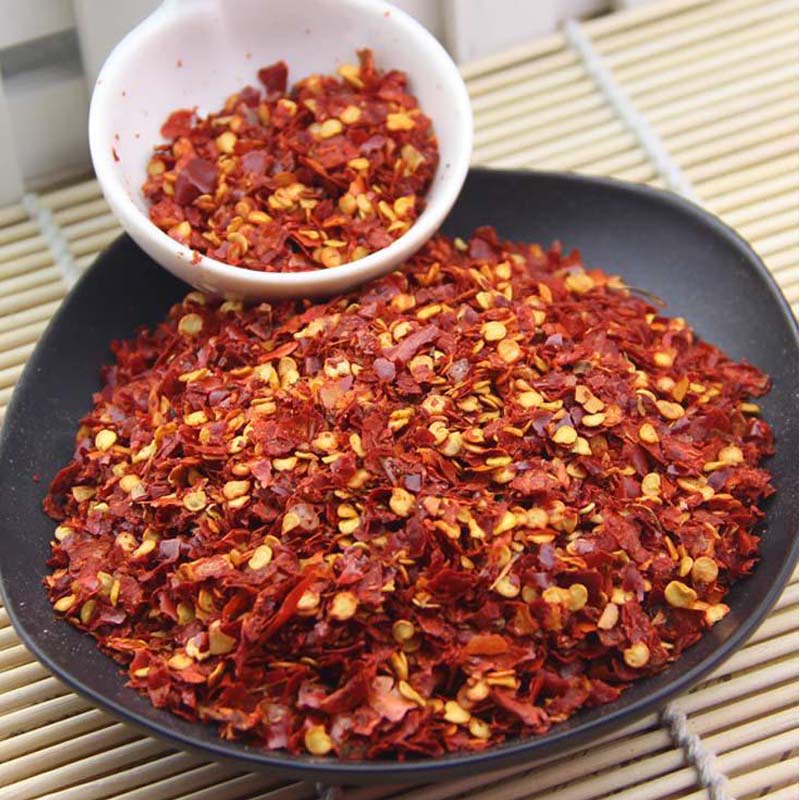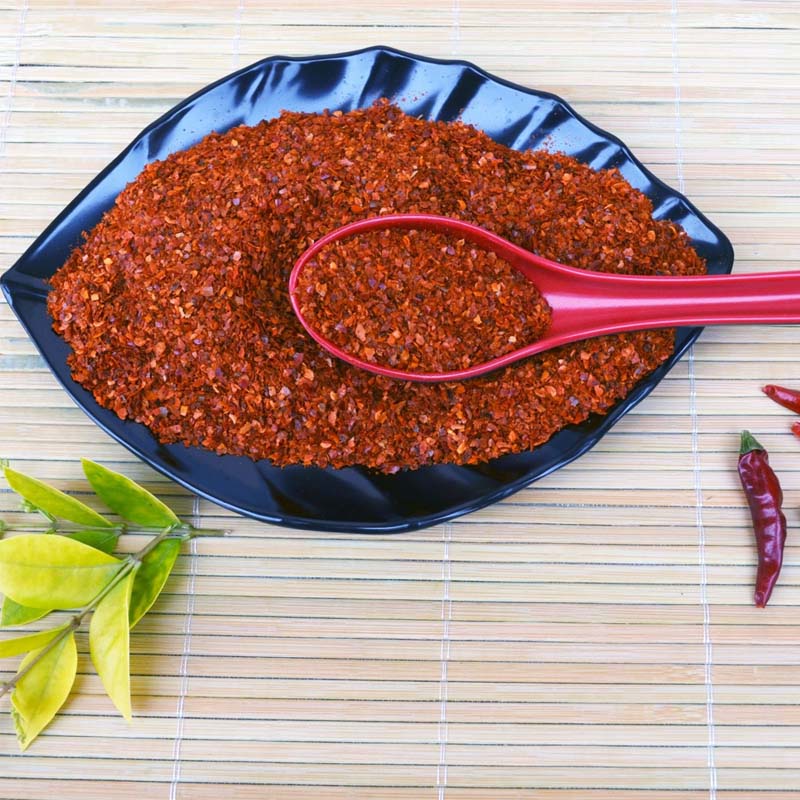- No. 268 Xianghe Street, Economic Development Zone of Xingtai city, Hebei 054001 China
- Byron@hbhongri.cn
Crushed Red Hot Peppers – Bold Heat, Fresh Aroma, Clean
Chili Crushed: An Insider’s Take on a Small Flake with Big Impact
If you cook for a living, or just cook a lot, you already know Crushed Red Hot Peppers pull more weight than their size suggests. In factories, pizzerias, and test kitchens, these scarlet flakes move the needle on flavor, color, and even perceived freshness. I’ve toured facilities from Hebei to Hunan; the best stuff consistently comes from disciplined sourcing and boringly rigorous QA—more on that below.

What it is (and why it matters)
Chili crushed—also called red pepper flakes—is simply dried red chilies crushed (not ground) into irregular flakes. Sounds simple; it isn’t. Seed ratio, drying curve, and flake size all swing the heat release and aroma bloom. Many customers say they can “taste” quality as a brighter, cleaner heat that doesn’t linger harshly. I’ve noticed that too, to be honest.
Industry trends
- Clean-label push: steam sterilization over chemical fumigants.
- Standardized heat tiers for consistent Scoville delivery in snack and meal-kit factories.
- Optical sorting and metal detection becoming table stakes, not “nice to have”.

Technical specifications (typical)
| Botanical | Capsicum annuum L. |
| Heat (SHU) | ≈15,000–50,000 SHU (tiers available; real-world use may vary) |
| Flake size | 3–8 mm, custom sieving on request |
| Moisture | ≤12% (ISO 939) |
| Color (ASTA) | ≈80–120 ASTA |
| Microbiology | Salmonella absent/25 g; Total Plate Count within spec (HACCP/ISO 22000) |
| Shelf life | 24 months sealed, cool and dry |
Process flow and quality control
Origin: No. 268 Xianghe Street, Economic Development Zone of Xingtai city, Hebei 054001 China. Materials: selected ripe pods, low-stem lots. Methods: sun/air drying → destemming → crushing → sieving → optical sorting → metal detection → steam sterilization → blending for target SHU → nitrogen-flush packaging. Testing: SHU by HPLC; moisture ISO 939; color by ASTA; aflatoxin per GB 2761/EU 1881; pesticides against EC 396/2005 via GC–MS; micro per ISO 6579. Service life: typically 24 months; color retention better in foil laminate bags.

Applications and advantages
- Foodservice: pizza finish, ramen bars, hot oil bases.
- Manufacturing: snack coatings, ready meals, meal kits, sauces.
- Retail: shakers and blends—BBQ rubs, kimchi kits, chili oils.
Advantages: consistent heat tiering, clean color bloom, low foreign-matter counts, and that fresh-crack aroma. It seems that when flakes are sieved tighter, consumer panels rate “quality” higher—even at identical SHU.
Vendor snapshot and customization
| Vendor | Certs | Lead time | Customization | Price |
|---|---|---|---|---|
| Hongri Spice (Hebei) | ISO 22000, HACCP; third-party tests | 10–18 days ≈ | SHU tiers, seed ratio, flake size, sterilization options | $ (competitive) |
| Regional Trader A | HACCP | 15–25 days | Limited sizing | $$ |
| Global Brand B | BRCGS, ISO 22000 | 20–35 days | Broad, higher MOQs | $$$ |
Customization tips: specify SHU band (e.g., 20–30k), flake window (3–5 mm), seed ratio, and sterilization method in the PO. Actually, that one paragraph in the PO saves weeks of emails.

Mini case studies
- National pizzeria: switching to Crushed Red Hot Peppers with tighter 3–5 mm flakes cut waste at the table and improved perceived heat; complaints dropped ≈18% month-on-month.
- Snack maker: 25–35k SHU blend stabilized heat in a chili-lime coating, ±5% variance over 6 lots (HPLC verified).
- Meal-kit brand: steam-sterilized flakes hit Salmonella absent/25 g while retaining ASTA color at 100±10.
Usage notes
Bloom in warm oil for sauces; add late for pizza and salads. Store airtight, away from light. For co-packers, aim for water activity aw ≤0.6 and include a sachet when shipping to humid regions. And yes, label as Crushed Red Hot Peppers if that’s your consumer-facing term—clarity wins.
References
- ASTA Analytical Methods for Spices and Seasonings (color, cleanliness).
- ISO 22000 Food Safety Management; ISO 939 (moisture in spices); ISO 6579 (Salmonella).
- EU Regulations: EC 396/2005 (pesticide MRLs); EU 1881/2006 (contaminants); GB 2761 (China mycotoxins).
-
Capsicum frutescens oleoresin – High Purity, Food GradeNewsNov.17,2025
-
Capsicum Frutescens Oleoresin – Natural Heat & FlavorNewsNov.17,2025
-
Peppereka Powder – Fresh, Vibrant Color & Sweet AromaNewsNov.17,2025
-
Paprika Oleoresin | Natural Red Color, Heat & Flavor BoostNewsNov.17,2025
-
Pure Turmeric Extract 95% Curcumin | Potent, Lab-TestedNewsNov.17,2025
-
Red Papper Pods – Premium Sun-Dried, Bold Heat & AromaNewsNov.10,2025







